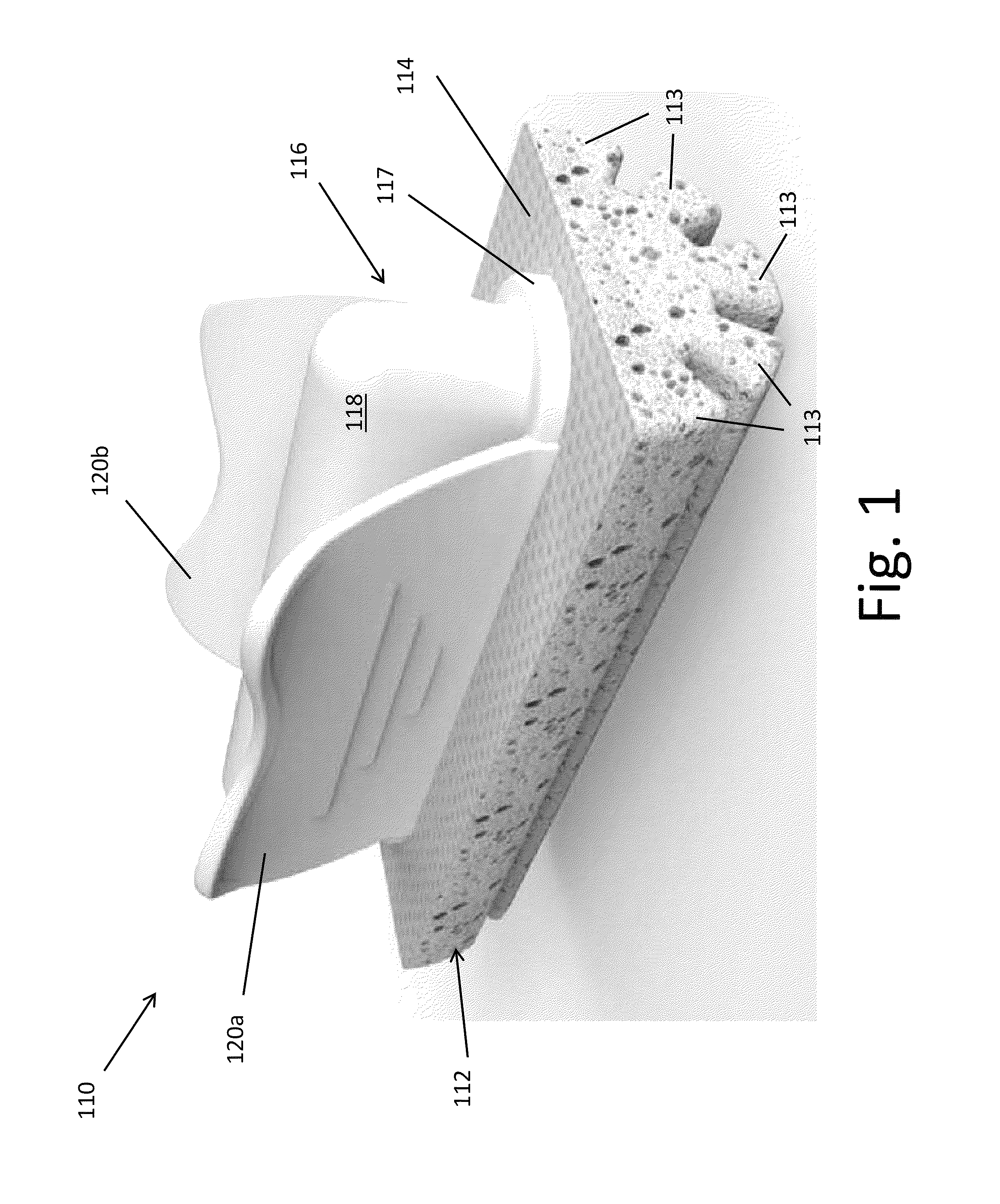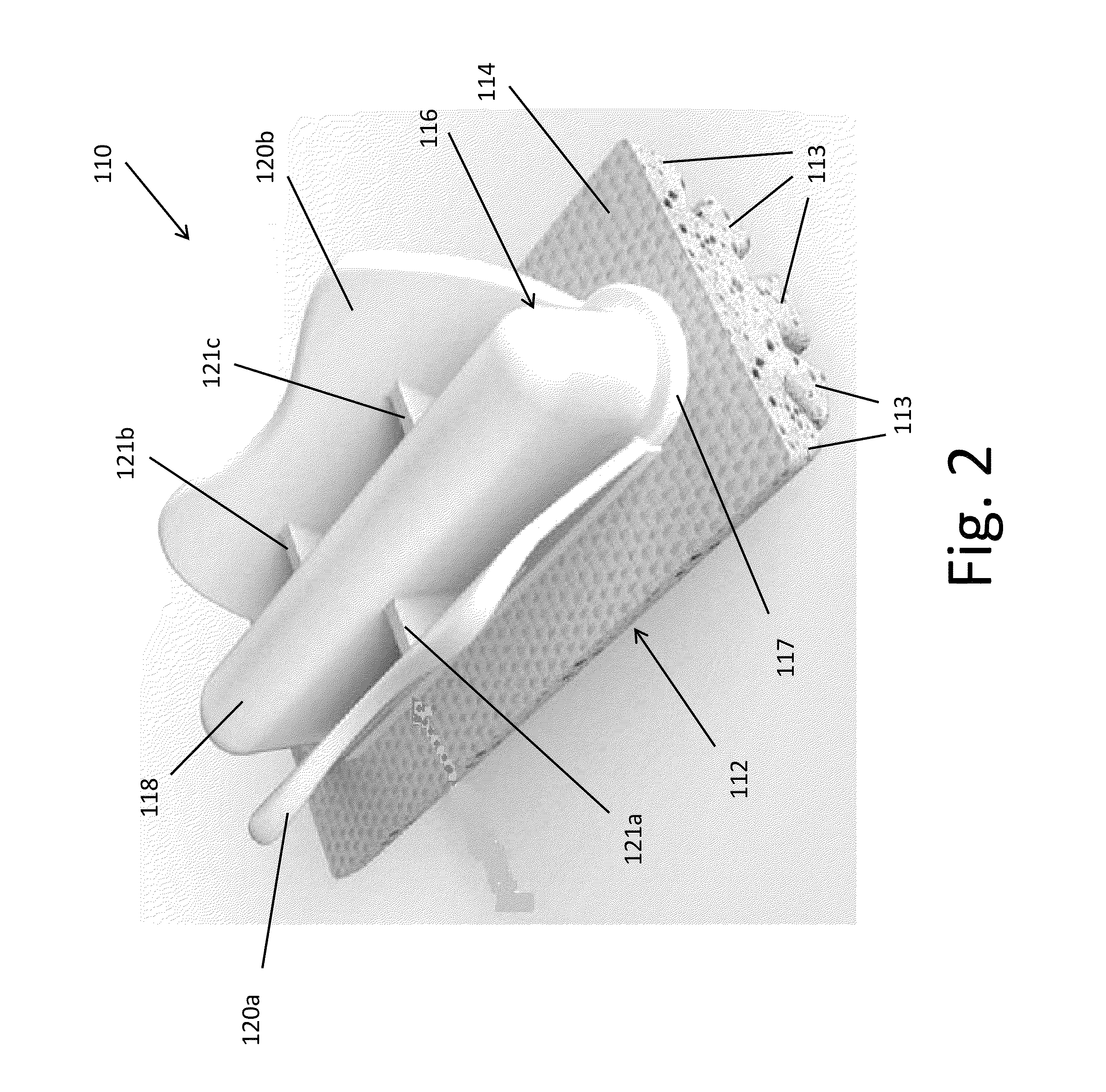Scrub for inhibiting catheter associated urinary tract infections
a technology for urinary tract infections and scrubs, applied in the field of catheter care post-insertion into patients, can solve the problems of increasing hospital stay, increasing hospital costs and morbidity, and inconvenient use of chlorexidine or similar wipes, and achieve the effect of preventing catheter infection and being easy to manipula
- Summary
- Abstract
- Description
- Claims
- Application Information
AI Technical Summary
Benefits of technology
Problems solved by technology
Method used
Image
Examples
Embodiment Construction
[0016]Referring to the figures, there is depicted an exemplary embodiment of a device for inhibiting catheter associated urinary tract infections (CAUTIs) or CAUTI inhibiting scrub, generally designated 110, for cleansing an area of a person at and proximate to an indwelling catheter insertion site, in order to aid in the inhibition and / or prevention of a CAUTI. The indwelling catheter is typically, but not necessarily, a Foley catheter. The CAUTI inhibiting scrub 110 is characterized by a sponge or sponge-like body 112.
[0017]The body 112 preferably, but not necessarily, has an oblong rectangular shape that is sized to fit into one's hand. A plurality of fingers or fingerlings 113 extend along a bottom portion of the body 112 from one end to another end thereof. The fingers 113 are spaced from one another to form channels between the fingers. The body 112 is sized to provide enough surface area to completely clean the meatus area (catheter insertion area or perineal area) in one or ...
PUM
 Login to View More
Login to View More Abstract
Description
Claims
Application Information
 Login to View More
Login to View More - R&D
- Intellectual Property
- Life Sciences
- Materials
- Tech Scout
- Unparalleled Data Quality
- Higher Quality Content
- 60% Fewer Hallucinations
Browse by: Latest US Patents, China's latest patents, Technical Efficacy Thesaurus, Application Domain, Technology Topic, Popular Technical Reports.
© 2025 PatSnap. All rights reserved.Legal|Privacy policy|Modern Slavery Act Transparency Statement|Sitemap|About US| Contact US: help@patsnap.com



